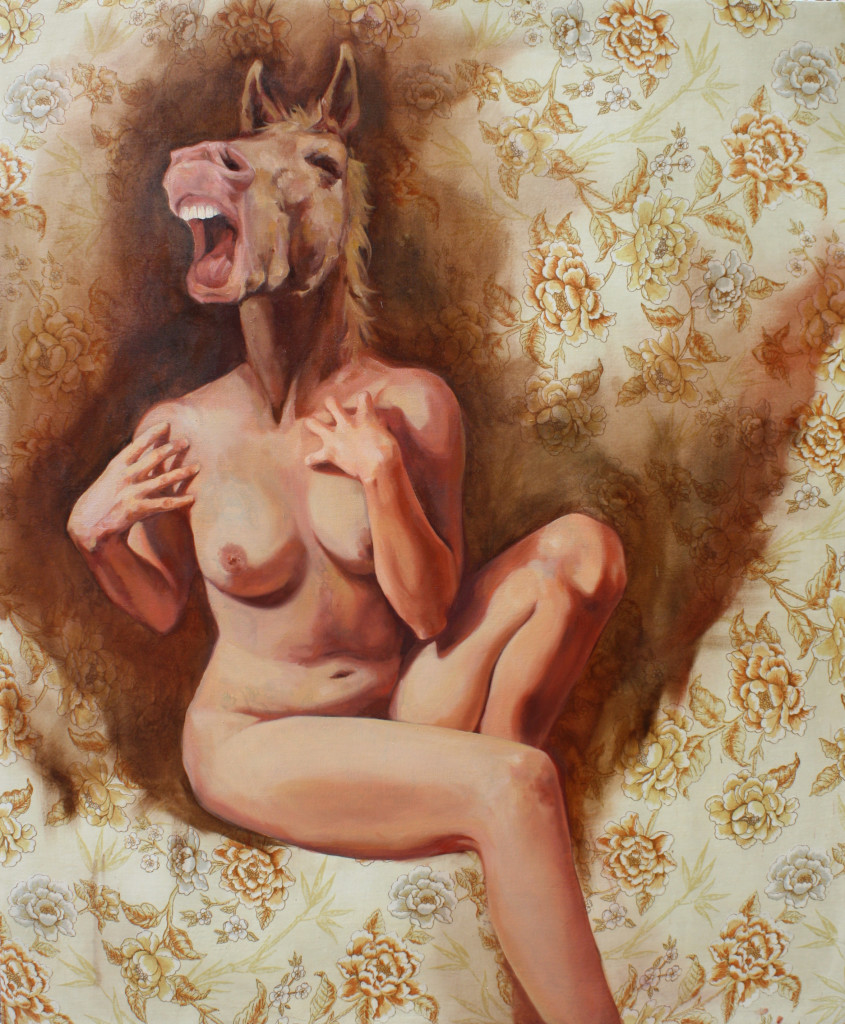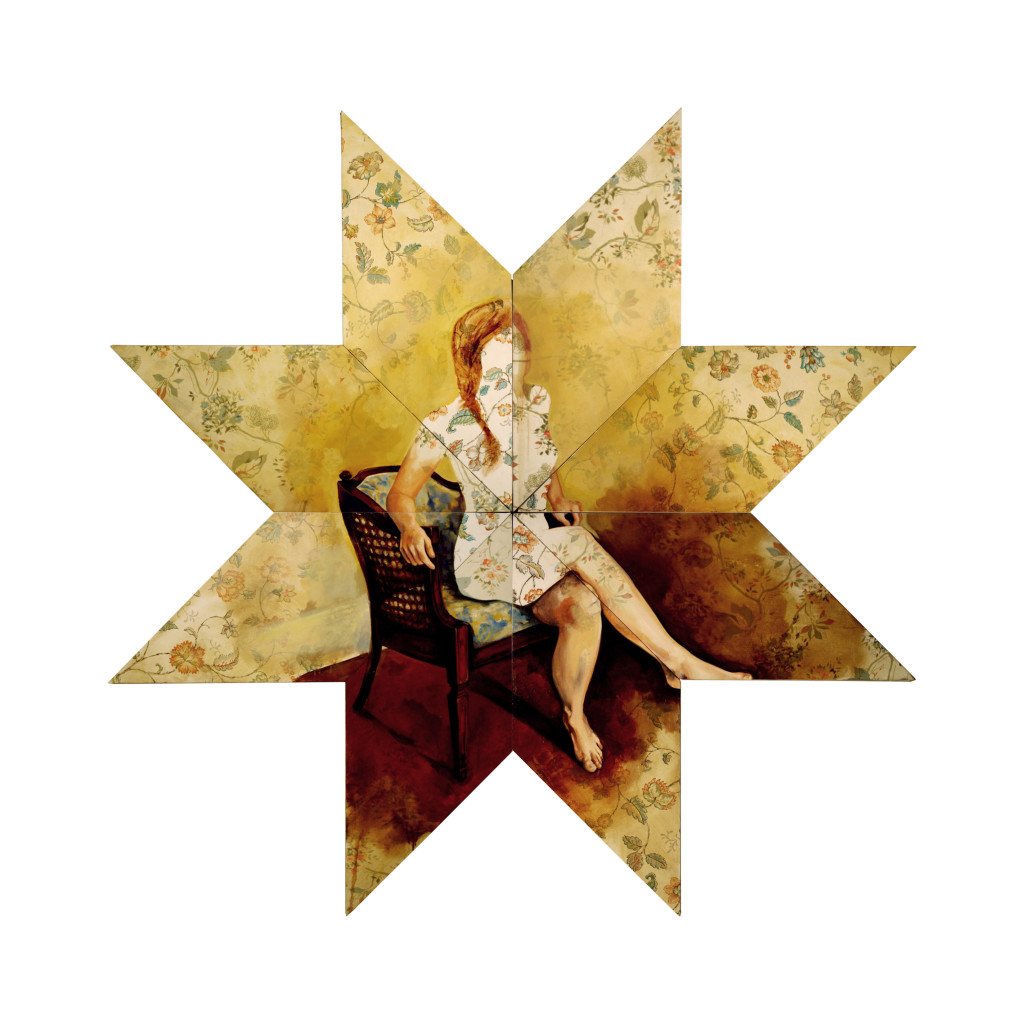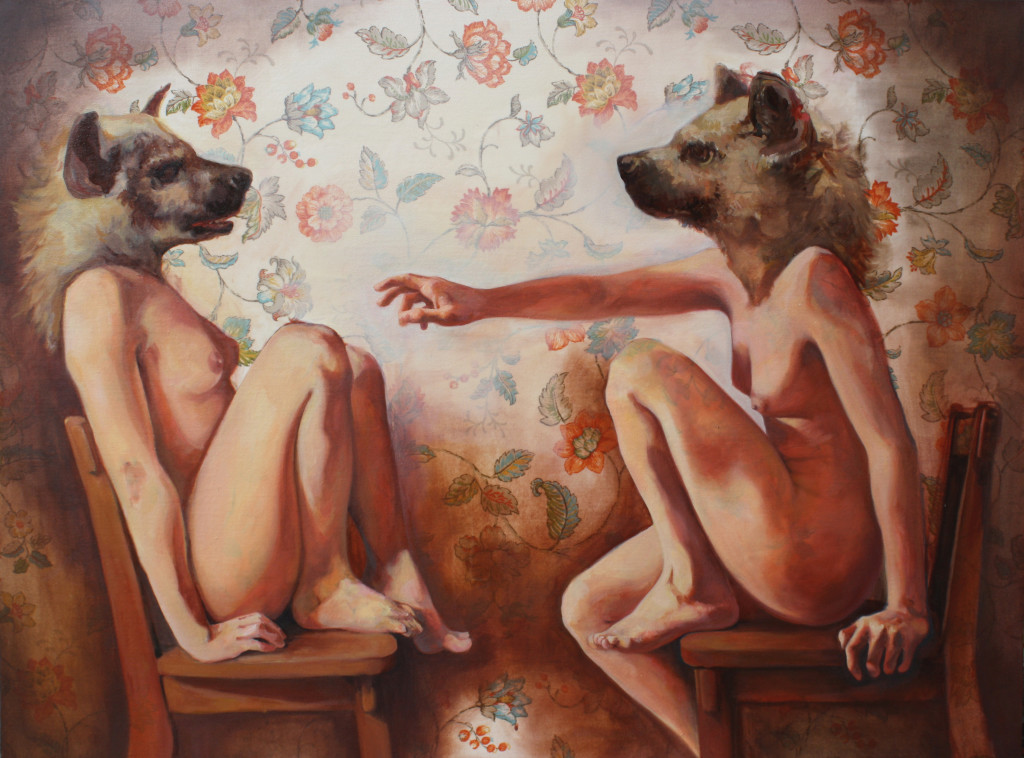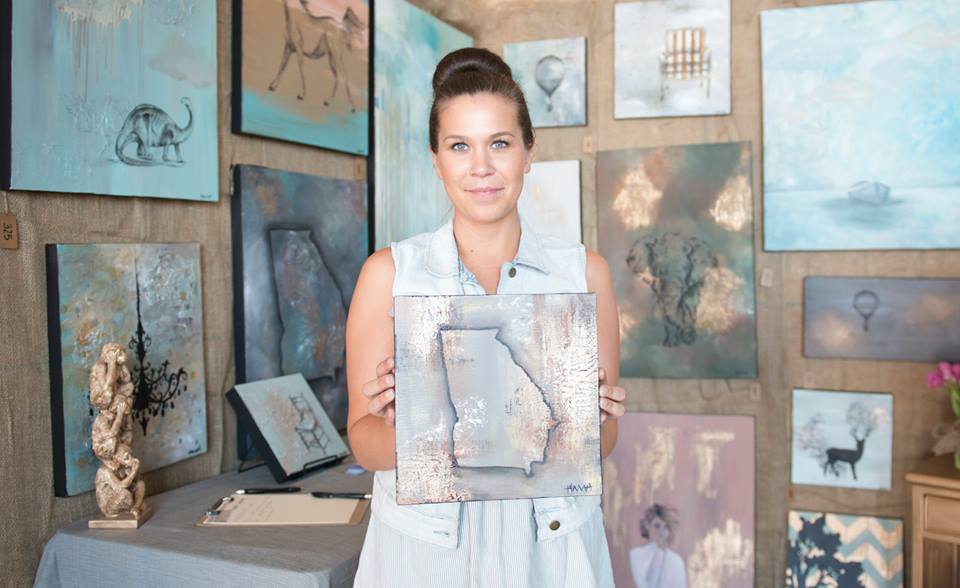 With a mixture of geometric shapes—recently inspired by Beep Beep’s Alchemy show—and animal imagery, artist Marcy Starz’s pieces draw you in as she explores gender and human behavior themes using fabric, plywood and other unconventional materials. The half animal/half people subjects illustrate human characteristics that often contrast with the animal’s associated meaning—all with a dreamy effect.
With a mixture of geometric shapes—recently inspired by Beep Beep’s Alchemy show—and animal imagery, artist Marcy Starz’s pieces draw you in as she explores gender and human behavior themes using fabric, plywood and other unconventional materials. The half animal/half people subjects illustrate human characteristics that often contrast with the animal’s associated meaning—all with a dreamy effect.
A 2011-2013 Creatives Project resident who holds a Bachelor in Fine Arts from Kennesaw State University, Starz has shown her work all over town through organizations and projects like Living Walls and, most recently, Forward Warrior. She took over Wylie Street along with dozens of other artists for the FW event and painted alongside artists Paper Frank and Nick Benson.
Here, Starz talks about animal symbolism, Atlanta as a supporting community and making public art.
CommonCreativ: How did you get started as an artist?
Marcy Starz: Like a lot of artists today, I started when I was a kid and just didn’t really stop. I’ve always been really creative and enjoyed making things with my hands, whether it was a drawing and painting or sewing some kind of garment. After graduating high school I took a year off before I enrolled in college with an undeclared major. During this time, I seriously considered a major in anthropology or another one of the humanities until I signed up for some studio art classes at Kennesaw State University. It was like coming back to Jesus, if Jesus were a kit of oil paints.
CC: How did you find your style of combining animals and geometric shapes?
MS: Animals have always been a subject matter that I’ve been drawn to. They carry a lot of symbolism and it interests me that their meanings can vary from one culture to the next. I think Beep Beep Gallery’s annual group show Alchemy is at least partly responsible for inspiring my interest in geometric shapes. It’s a big show where they distribute triangle-shaped panels to the artists to paint on and then display them in the gallery a month or so later around the holidays. Before then I’d never really considered putting hard lines and sharp edges anywhere near my work. My pieces are usually about flowy, pretty, organic things. But seeing all of those triangles together and imagining a whole piece consisting of them inspired me to start painting on individual triangles that would comprise a whole piece. I alternated the fabric that I used on each panel and that drew some correlations to quilting, which seemed like an obvious next step to take the work. It’s a bit of a continuation of the gender themes as well.
CC: Your past work was dominated by gender and human behavior themes, often with animal heads/portraits.
MS: It’s a little less obvious now, but my work is still informed by gender and human behavior themes. Quilting is a female-dominated tradition, and I’ve always been interested in more domestic things as hobbies. I’ve never quilted in my life and may never because I don’t believe I’ll ever be meticulous and patient enough to do so. I do, however, feel like I am a part of that DIY movement where young women (and men) are picking up crochet hooks, knitting needles and sitting behind sewing machines, and the revival of those skills really interests me. The latest paintings I’ve completed on the geometric panels have figures centered in the compositions, but they’re incomplete. Their limbs are still apparent but their faces and torsos aren’t so much if at all—they’re occupied by patterned space. Typically I create a piece and then kind of analyze them as they’re finished and whatever result I come up with can inform the next piece. Basically, I’m still working it all out.
CC: You normally use plywood, bed sheets and other unusual media to paint on. Do you feel more comfortable using those as opposed to a regular canvas?
MS: I hate painting on canvas. I don’t like the texture or that there’s so much give to the surface. I like surfaces that don’t bounce back at you. The bed sheets are always stretched over panels because otherwise they’d be too fragile and transparent. The patterned backgrounds allow some really interesting use of negative space and glazing techniques as well.
 |
 |
CC: Do you prefer small media or public walls to paint on?
MS: Both “conventional” painting and public murals have their merits and are rewarding in their own ways. Murals are great because they’re accessible to nearly anyone and reach a much wider audience, versus smaller paintings which require going to a gallery and also having expendable income if you want to own one. My first public mural was for Living Walls in 2011, and it’s great to have people in the community come out and have a conversation with you, to interact and engage with the artists. It was also pretty nerve-wracking because at the time it was the biggest surface I’d ever painted and it was out in public, where anyone is free to watch me make mistakes. So I felt vulnerable because I was out of my element, but I suppose you could also call that character building. Small media is great because it’s more portable and more readily accessible to the artists making the work.
 CC: What’s the creative process?
CC: What’s the creative process?
MS: I need quiet time and I need play time where I just sit around in the studio or my house and explore imagery through drawing, looking at photo references or taking pictures. I relish in the preparation stages of making work because it’s almost meditative, especially when stretching the bed sheets over panels. There’s a lot of repetition and I often don’t even know what the piece is going to look like in the end, so I get a lot time with the material before I begin painting.
CC: Tell me about your experience with Forward Warrior.
MS: It was so much fun. There were a lot of positive responses from the community and I don’t feel sorry for anyone who got stuck on Wylie street because of traffic or a lift being relocated to another artist’s mural. I’m glad that I’d had the experience of painting for Living Walls in the past because it primed me for a live painting event. Nick Benson, Paper Frank and I all collaborated on a section of the wall together, which we had sort of planned on during a meeting before the event but never fully committed to until the three of us arrived late and there wasn’t a whole lot of wall space left. We decided to actually have our pieces interact with one another’s rather than split up. Our subject matter varies so it’s kind of a silly piece, and was really fun to make. Nick paints dinosaurs, Frank paints candy, and I paint deer. It’s a kind of weird mural.
CC: What do you think about Atlanta’s arts scene?
MS: There’s a lot of love that goes into it. Everyone wants to improve it and they’re getting results and that’s all the more encouraging. There are so many opportunities for artists these days that it’s hard to keep up with them all. We need more support, from the community and from each other.
CC: How do you promote yourself as an independent artist?
MS: The Internet comes in awfully handy, and when I’m on top of things I’ll post progress pictures on the usual social media sites like Facebook, Instagram and Twitter. Otherwise, when opportunities like group shows or public painting projects present themselves I like to take advantage of them—sometimes they lead to more, sometimes they don’t.
CC: What’s next for you?
MS: I’m looking forward to continuing to explore where the geometric panels go. I’d really like to go to grad school and apply to more residencies, and travel more. I’m excited to keep trying to figure things out.
See more of Marcy’s work on her website.






